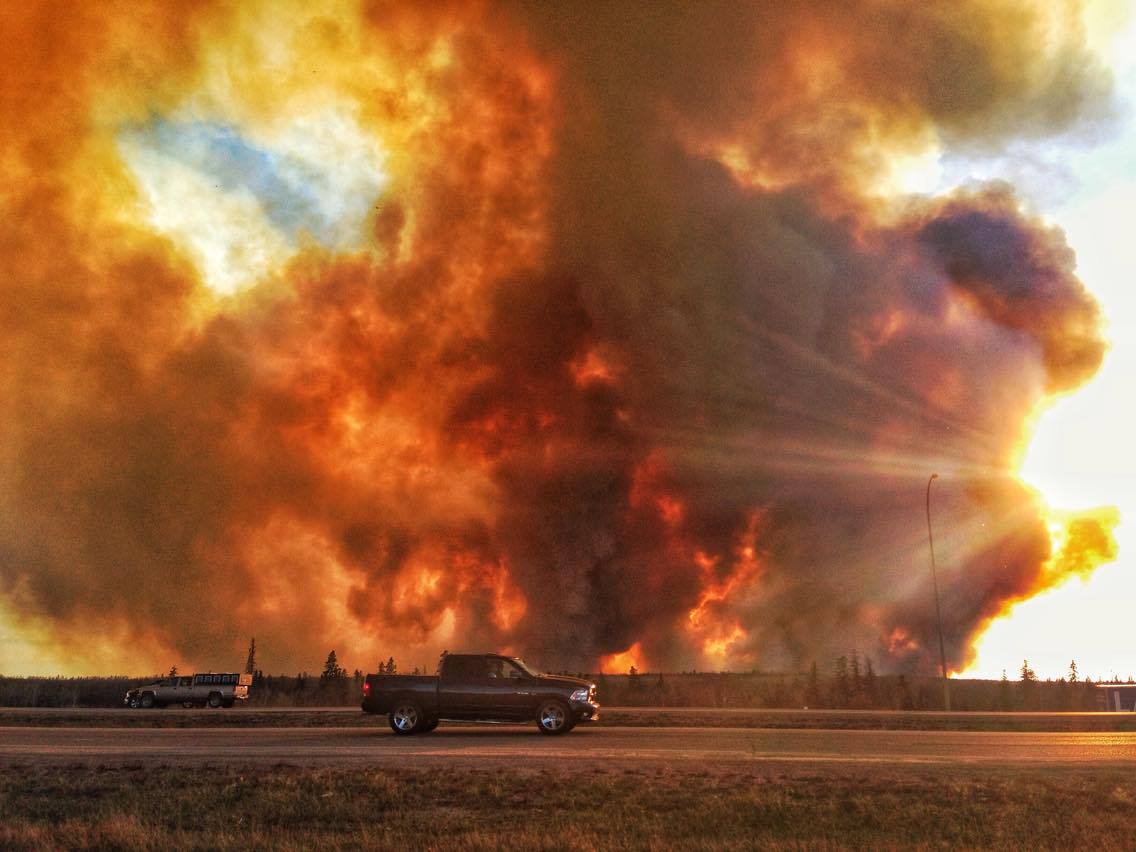On Tuesday morning, by all accounts, residents of Fort McMurray, Alta., woke up to a blue sky, with a few wisps of cloud. Smoke from forest fires could be seen in the distance, but there didn’t seem to be an immediate threat of the fire reaching the city.

READ MORE: Fort McMurray wildfire – Albertans offering food, shelter to residents fleeing fire
But by Tuesday afternoon, it became abundantly clear that the city of 80,000 was not to be spared by the searing flames. Highway 63, the main artery in and out of the city, became clogged with trucks, cars, RVs, people all trying to salvage what they could and escape with their lives after a mandatory evacuation order was issued.
GALLERY: Fleeing Fort McMurray
Why did the fire seem to spread within mere hours?
El Niño
The most important ingredient needed for forest fires to propagate is fuel.
There can be many sources of fuel for forest fires, but dry conditions are key in providing the necessary ingredients. Dry tree stumps, grasses and pine needles all are excellent sources of fuel. And last winter made all of the sources readily available.
- Enter at your own risk: New home security camera aims paintballs at intruders
- High benzene levels detected near Ontario First Nation for weeks, residents report sickness
- Boston Dynamics unveils ‘creepy’ new fully electric humanoid robot
- Ontario First Nation calls for chemical plant to be shut down amid ‘dangerously high’ benzene levels
Watch below: Fort McMurray wildfire – How did the fire grow so fast?

READ MORE: Fort McMurray wildfire: How do you fight the blaze?
Last winter’s El Niño was one of the strongest on record. The extreme and unusual warmth of the Pacific Ocean helps to create warmer and drier conditions across Canada, which was certainly evident this year.
“Because spring came about a month early here, we are already in the middle of our prime fire season for the spring,” said Mike Flannigan, a wildfire expert at the University of Alberta. “Given the already dry conditions means it’s easier for fires, once they sustain themselves, to go underground until it gets windy and they re-appear.”
Weather conditions
There are three meteorological factors that play an important role in the spread of wildfire: heat, humidity and wind. And for Fort McMurray, it all made for a perfect storm on Tuesday.
It’s easy to spot: temperatures in Fort McMurray — across the entire province — are far higher than normal for this time of year. Typically, the normal daytime high is about 16 C. Instead temperatures have soared by 10 C above normal, even reaching 32.6 C on Tuesday. The city is forecast to reach 30 C again on Wednesday.
WATCH: Global News reporter Reid Fiest evacuated as fire spreads within minutes at side of Highway 63

Humidity is the amount of moisture in the air. Moisture in the air affects moisture in the ground and in potential fuel sources. Grasses, pine needles, etc. can all absorb moisture, which in turn helps to control the spread of fire. But drier air means drier fuel sources, which in turn can help spread the fire.
In Fort McMurray humidity levels have been near 30 per cent or lower, which means it’s been relatively dry.
WATCH: Abandoned vehicles, houses on fire line routes out of Fort McMurray

The third and, perhaps, most obvious source of wildfire spread is wind conditions. The windier it is, the easier it is for the flames to spread.
Wind gusts in Fort McMurray on Sunday and Monday were near 30 km/h, ideal for the spread of wildfire. But on Tuesday conditions worsened: a wind gust of 72 km/h was recorded by Environment Canada.
“When it is hot and dry and windy, it can jump across a river like it did when it jumped across Athabasca River,” Flannigan said.
The forest
The type of forest that lies across the region is an important factor.
Canada is home to the boreal forest, a type of forest that responds well to fires and even needs them.
“The boreal forest is a fire-dependent ecosystem,” said Bernie Schmitte, forestry manager in Fort McMurray. “Spruce trees, pine trees, they like to burn. They have to burn to regenerate themselves.”
Oftentimes, fire agencies will allow fires to burn in order to allow the natural cycle to continue. But in the case of a fire close to a city or town, such as Fort McMurray, that’s not the case.
The boreal forest is a mixture of species, ranging from entire deciduous forests to a mix of deciduous and coniferous trees.
Trees such as aspen, jack pine, lodgepole pine and white birch are often the first to regenerate after a fire, as they all need plenty of sunlight. They also produce seeds that spread over a vast area, carried by the wind.
WATCH: Fort McMurray wildfire: Boreal forests designed to burn, makes fighting it a challenge

Then other coniferous trees become established, their opened cones dropping to the ground.
The rest of the species respond in kind, their life cycle taking hold as it has for hundreds of years.
All these conditions — the weather, El Niño and a forest that welcomes fires — made for the perfect storm on Tuesday, a reminder that nature is the ultimate force.

















Comments